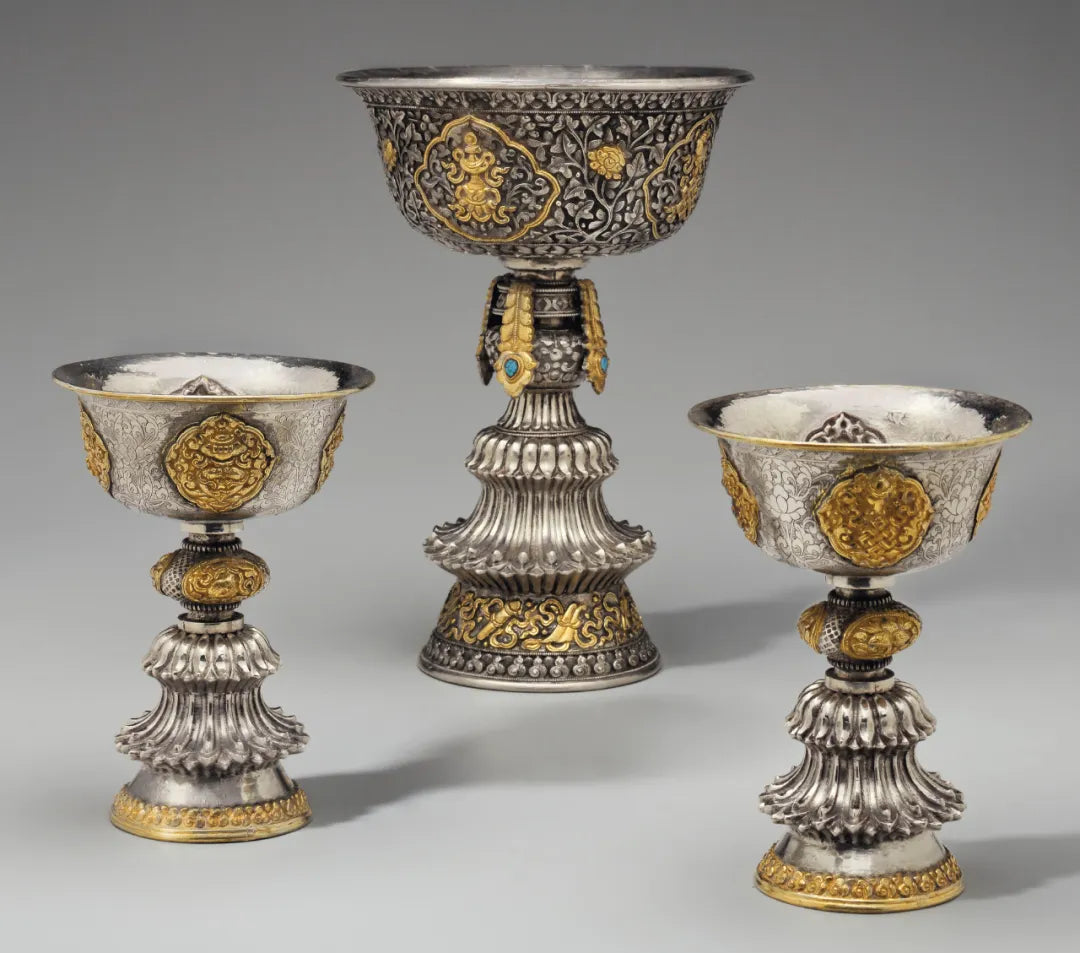
The flickering wisdom light of butter lamps: Offerings in Himalayan culture
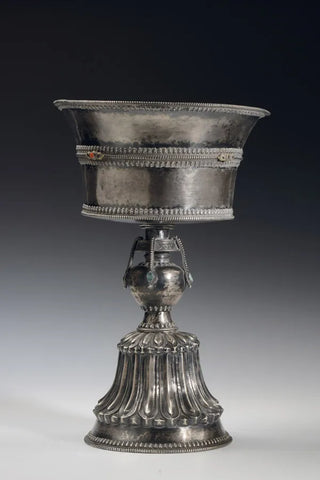
The first half of the 19th century, private collection
A Buddha lamp made in Lhasa region for longevity or ritual purposes
There are many records of this lamp by some prominent Gelug and Sakya sects monks.(ཚེ་བུམ་རིན་ཆེན་མཆོད་ཀོང)
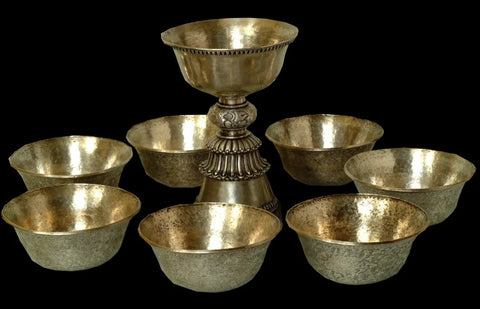
19th century, from the collection of NDTH Museum
Records show that it was originally used as an offering vessel in the imperial hall of the Potala Palace
The term 'Tudeng' style comes from the 13th Dalai Lama Tudeng Gyatso(ཐུབ་བསྟན་མཆོད་ཀོང)
མར་མེའི་སྣོད་ནི་སྟོང་གསུམ་གྱི་སྟོང་ཆེན་པོ་
འཇིག་རྟེན་ཁམས་ཀྱི་ཁོར་ཡུག་དང་མཉམ་པར་གྱུར་ཅིག།
སྡོང་བུ་ནི་རིའི་རྒྱལ་པོ་རི་རབ་ཙམ་དུ་གྱུར་ཅིག།
མར་ཁུ་ནི་མཐའི་རྒྱ་མཚོ་ཙམ་དུ་གྱུར་ཅིག།
གྲངས་ནི་སངས་རྒྱས་རེ་རེའི་མདུན་དུ་
དུང་ཕྱུར་རེ་རེ་འབྱུང་བར་གྱུར་ཅིག།
The wick is as securely placed as Mount Meru,
The oil is as boundless as the endless oceans,
The number of lamps is billions, offered to each and every main Buddha.
- Excerpt from "Prayer of Offering Lamps"
Attributed to Atisha Dipamkara (982-1054)
It is said in the scriptures that Atisha Dipamkara and his seventeen
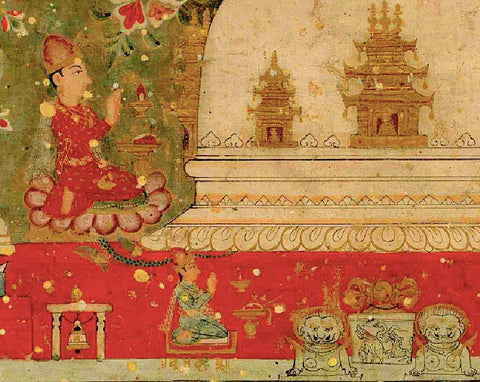
Inscription states that it was painted in 1816, private collection
Detail: A bowl-shaped lotus flower lamp next to the donor
"One of the classic Buddhist lamp styles in the Nepalese Kathmandu style"

18th century, Rubin Museum Collection
Detail: The "Gaden" style butter lamp on the altar
The base resembling a Gaden-style stupa butter lamp
In some biographical texts, it is referred to
Experts in South Asian art history believe that it began to be popular during the Tibetan Empire period
It is considered the most essential local adaptation of butter lamp design (with the most evolutionary variations)
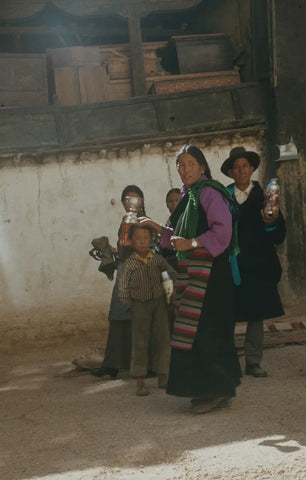
Taken by Professor Michael Aris in 2002
Held in the Pitt Rivers Museum, University of Oxford
"The firm belief and the long yearning"
These two are the essence of the Tibetan lamp culture
When the hidden master Palden Lhamo (1450-1521)
Holds the burning lamp in his hands
And slowly returns from the depths of the lake to the crowd questioning him
The lamp that does not extinguish in water is a symbol of the practitioner's faith
From the "seven offerings" of the lamp offering to the offering of the celestial maiden holding the lamp in hand
Hundreds, thousands, even millions of lamps are symbols of the prayers of monks and laypeople
The light of the lamp dispels all darkness caused by the three poisons
Lighting it can "eliminate the suffering of karmic obstacles and emotional levels"
Past, present, future
Heaven, earth, hell
The lamp of wisdom and compassion guides sentient beings to liberation
For the endless thoughts of loved ones and mentors
Burn and melt with the body of butter
Scholars meditate from the wick of the lamp
Viewing the yin realm and the pure land of the Buddha
And the fiery state when the lamp is burning
Can also be used for divination in various endeavors
Conch-shaped, spherical, dim light, split light, gemstone-like
Complete, peaceful, obstacles, disasters, wealth
The small lamp in front may be tiny, but it is no different from the world of samsara
The butter in the lamp may be small, but it is no different from profound wisdom
Gazing at the lamp can achieve the four complete accomplishments.
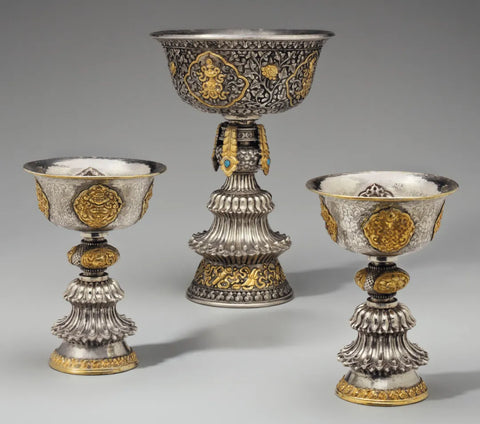
19th century, Private Collection
Recorded to have originally been used in the Summer Palace of Norbulingka by the lakeside holding boat palace
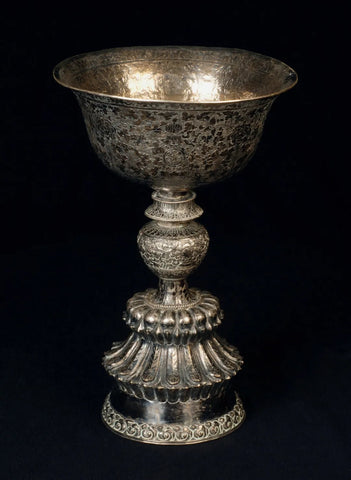
18th century, in the collection of the Rubin Museum
Possibly used to offer to the 6th Panchen Lama by Emperor Qianlong
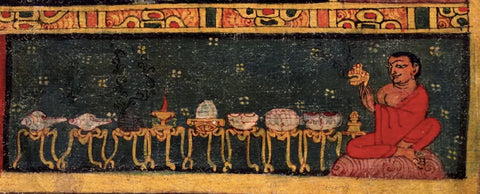
Late 15th century, in the Rubin Museum
Detail: Butter lamps among various offerings in front of the patron
In some early ritual texts, the description of the shape of the Buddha lamp is as follows:
"The lamp body is like an inverted bell and the lamp stand resembles a vajra."
Firstly, during the imperial period, there was a mixture of styles and rituals for butter lamps.
Secondly, from the 11th century, the design of butter lamps began to gradually localize.
Finally, from the 17th century onwards, the indigenous design of butter lamps became more secularized.
The most exquisite butter lamps that exist today mostly come from the third time period.
Originating from South Asia, the lotus-style short lamp and the "Kadang" style butter lamp were the two most popular types of butter lamps in Tibet.
There are also three other types:
- Butter lamps (བླ་མ་མཆོད་ཀོང་) that were popular before the 17th century
- Guru butter lamps (གོང་མ་མཆོད་ཀོང་) popular during the Sakya regime
- Monarch butter lamps (ཕོ་བྲང་མཆོད་ཀོང་) popular during the Pagzhak regime
Guru butter lamps have a wider lamp mouth and shorter lamp pillar, while Monarch butter lamps have an inwardly extending lamp mouth and longer lamp pillar. Palace butter lamps have a flared lamp mouth and a lamp pillar that resembles bamboo joints.
The two most popular types of butter lamps in Tibet after the 17th century are the "Tudeng" style butter lamp introduced earlier and the "Gesang" style butter lamp (བསྐལ་བཟང་མཆོད་ཀོང་) created during the time of the 7th Geshi Gatsang Gesang Gyatso.
The "Gesang" style butter lamp has a flared mouth and a wide, flat body with a tucked-in waist.
The materials commonly used to make butter lamps in Tibet are metals, ceramics, and stone.
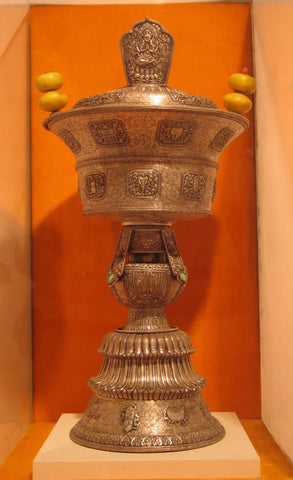
19th century, in the collection of the National Museum, New Delhi
Rare large offering lamp with a set of combinations

